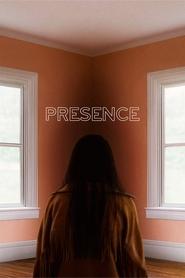Any interest potentially added by the formal conceit of the first-person perspective is nullified by a screenplay so clumsy and contrived that I thought they were going for a kind of quasi-Lynchian level of detachment. But no, they are not. There are hundreds of lines along the lines of "I'll show you what I showed the other two" — thanks, bro, I couldn't follow the really quite obvious story. With that level of dialogue, I wouldn't be surprised if people finish the film without even realising there was a climatic reveal at all, but I hear it's actually been stolen from some (presumably better?) films. The film's sly suggestion that the opioid epidemic was caused not because of corruption, deregulation, corporate malfeasance and/or a broader hollowing out of society, but rather rapey teenage boys using "fucking synthetic fent" leaves a sour taste in my mouth. No doubt the screenwriter thought they were being topical, well-meaning and probably progressive, which only compounds the problem in this reviewer's eyes.
The real question mark was, does the fact that there's nobody to cut to in a reverse shot neutralise the audience's desire, in a typical point of view situation, to see a reverse? I was convinced that it would. Once the second shot of the movie happens and you understand what the gimmick is, you'd realise there's nothing to cut to and you would just drop that, because, personally, point of view films have not worked for me for that reason. I want to see the face of the person who's having the experience.
— Director Steven Soderbergh (Sight and Sound, March 2025)
Presence, a formal conceit above all else, plays into dull, haunted-by-one's-trauma platitudes. Soderbergh rouses compelling ideas about absence and alignment —what can a ghost communicate that the camera cannot? — but the result feels middling, a sort of mystic posturing that conveys last-gasp, shopworn tropes about abuse. [Each] scene is notably bracketed by a black screen, always a beat longer than feels comfortable. This resetting of perspective reveals the gaps in time that audiences are not privy to, but also feels like another evasion that prevents true alignment with the spirit's POV.[…]
Presence is by no means an insignificant effort — it tenders heady questions about ownership, privacy and karmic release, and does so with clarity — but its efforts to formally renovate the domestic ghost plot feel homebound.
— Saffron Maeve (Sight and Sound, March 2025)

